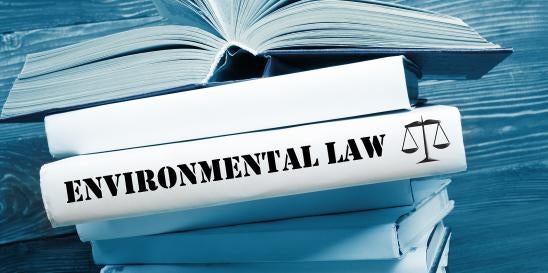B&D is pleased to present the next installment of our 2024 Litigation Look Ahead series. (Read part four covering Fifth Amendment takings cases here). In this edition, our litigation team examines various issues relating to the Comprehensive Environmental Response, Compensation, and Liability Act (CERCLA), including a case pending before the U.S. Supreme Court considering bankruptcy courts’ ability to resolve third-party claims against parties that have not filed for bankruptcy. Additionally, this installment looks at two cases that the Supreme Court declined to review related to the statute of limitations for subsequent contribution claims under CERCLA Section 113(f) and the question of whether the clear error or abuse of discretion standard applies for equitable allocations under CERCLA Section 113(f)(1).
Bankruptcy Dilemma: The Debate Over Third-Party Releases in Chapter 11
Case Summary
This case arises out of Purdue Pharma L.P.’s application for Chapter 11 bankruptcy following settlement of mass tort litigation claims relating to the opioid epidemic against Purdue and individual members of the Sackler family.
The Sackler family did not file for bankruptcy but agreed to personally contribute approximately $5.5 to $6.0 billion to the Purdue bankruptcy in exchange for releasing all direct and derivative claims against the Sackler family through that proceeding. This condition, and others, were mediated amongst a group of interested parties. Eventually, the bankruptcy court approved the plan.
The U.S. District Court for the Southern District of New York vacated the approval, holding that the Bankruptcy Code does not allow for releases of third-party claims against non-debtors. The U.S. Court of Appeals for the Second Circuit reversed, holding that two sections of the Bankruptcy Code, 11 U.S.C. § 105(a) (providing the bankruptcy court with its equitable authority) and 11 U.S.C. § 1123(b)(6) (permitting the approval of a plan that is consistent with the Bankruptcy Code), jointly provide the bankruptcy court authority to approve a plan that contains the nonconsensual release of third-party causes of actions against non-debtors.
The U.S. Supreme Court accepted the petition for cert to consider the release of third-party claims in a bankruptcy plan. The Court heard oral arguments on December 4, 2023.Harrington v. Purdue Pharma, L.P., No. 23-124
Implications
Should the Supreme Court affirm the Second Circuit’s holding, the decision will permit the bankruptcy court to resolve claims by third parties against parties that have not themselves filed for bankruptcy. Such a decision could surface in bankruptcies involving Chapter 11 parties with CERCLA liability, among others.
The approval of a plan permitting the release of third parties would still face multiple hurdles, such as the need for the overwhelming support of the plan by creditors; the fair payment of creditors’ claims; and the assessment of the appropriateness of the scope of the release, the importance of the releases to a debtor’s reorganization, and overall equity. The court will also assess the potential impact of the release on the bankruptcy property, which could involve extensive discovery for the released direct claims.
This lengthy process provides at least some opportunity for those concerned about the bankruptcy of a potentially responsible party (PRP) to be heard and oppose a plan with third-party releases. But in practice, resolution of contaminated sites moves slowly, and parties risk having their rights extinguished before they are even identified as a PRP.
Under Pressure: CERCLA Contribution Statute of Limitations May Start Sooner Than You Realize
Case Summary
Last fall, the United States Supreme Court denied certiorari for a U.S. Court of Appeals for the Sixth Circuit, holding that a declaratory judgment establishing liability for response costs triggered the statute of limitations for subsequent contribution claims under CERCLA Section 113(f). Importantly, the declaratory judgment, as the Sixth Circuit described it, only established liability – it did not allocate that liability or any response costs among potentially responsible parties (PRPs). The Sixth Circuit explained that the three-year statute of limitations for contribution actions begins to run at the issuance of the declaratory judgment because it established liability for future remedial work. The declaratory judgment satisfied Section 113(g)(3)(A)’s limitation that “[n]o action for contribution for any response costs or damages may be commenced more than 3 years after…the date of judgment in any action under this chapter for recovery of such costs or damages.” (emphasis added). Georgia-Pacific Consumer Products LP v. NCR Corp., 32 F.4th 534, 546 (6th Cir. 2022); petition denied, 144 S.Ct. 69(Oct. 2, 2023).
Implications
The Sixth Circuit’s holding, and the Supreme Court’s denial of the petition, should put PRPs on notice that the statute of limitations for contribution actions may begin running sooner than anticipated. The Sixth Circuit made clear that it is not necessary to allocate costs or liability for the statute of limitations to begin running – an order establishing liability for any response costs starts the clock. PRPs should promptly investigate the potential liability of other parties with relationships to a CERCLA site and consider filing contribution claims as soon as practicable. This can be difficult when PRPs simultaneously investigate and remediate a site.
Even armed with factual distinctions separating a given site from this case, parties should avoid the risks of running afoul of the statute of limitations, which could result in a bar to their contribution claims.
CERCLA Equitable Allocation Review: SCOTUS Cert. Denial Leaves Circuits Split
Case Summary
The U.S. Supreme Court denied Columbia Falls Aluminum Co., LLC’s petition of a U.S. Court of Appeals for the Ninth Circuit decision holding that a district court’s equitable allocation of environmental response costs under CERCLA Section 113(f)(1) should be reviewed on appeal for clear error.
The issue in the case was the appropriate standard of review on appeal of an allocation of liability between two parties for the cleanup of the hazardous waste originating at an aluminum smelting site in Columbia Falls, Montana. Columbia Falls argued that the Ninth Circuit should have used the abuse of discretion standard rather than the clear error standard. Atlantic Richfield argued that there was simply an insignificant difference in terminology between the clear error standard and the abuse of discretion standard and, therefore, no genuine circuit split. The Supreme Court denied Columbia Falls Aluminum Co., LLC’s petition on October 2, 2023. Columbia Falls Aluminum Co. v. Atlantic Richfield, No. 22-1207
Implications
Because the Supreme Court denied the petition for certiorari, the federal circuit court split remains on the question of whether a clear error or abuse of discretion standard applies for equitable allocations under CERCLA Section 113(f)(1). It is also possible that the Supreme Court agreed that the standards are effectively the same. But without express guidance as to the potential distinction between the clear error and abuse of discretion standards, PRPs should consider the differing standards for a district court’s equitable factor analysis when weighing appeals. The U.S. Courts of Appeal for the Fourth, Fifth, and Ninth Circuits have held there is a clear error standard, while the First, Second, Third, Sixth, Seventh, Tenth, and D.C. Circuits have held there is an abuse of discretion standard.
In Conclusion
An affirmative decision in Harrington would permit bankruptcy courts to resolve claims by third parties against parties that have not themselves filed for bankruptcy. This could be an issue in bankruptcies involving Chapter 11 parties with CERCLA liability. PRPs should also note that the Supreme Court’s denial of certiorari in Georgia-Pacific Consumer Products LP means that a declaratory judgment establishing liability for response costs triggers the statute of limitations for subsequent contribution claims under CERCLA Section 113(f). Additionally, the Court’s cert denial in Columbia Falls Aluminum Co. means that the federal circuit court split remains on the question of whether the clear error or abuse of discretion standard applies for equitable allocations under CERCLA Section 113(f)(1). PRPs should take note of which circuit they are in when considering appeals.
Coming Soon in our Litigation Look Ahead Series…
In our 2024 Litigation Look Ahead series, we highlight cases – environmental and otherwise – that could have notable impacts on the regulated community or lead to changed regulatory approaches. The final installment of the series will examine natural resource law. In case you missed it, read:








 i
i


